Repel produces a number of DEET products intended to scare away those little flying buggers that seem to be everywhere on these warm summer nights. While walking through my local Target, I noticed that there were varying concentrations available for purchase at my local store (please excuse the hand-held photos):
| 23% DEET | 40% DEET | 100% DEET |
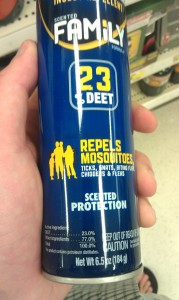 |
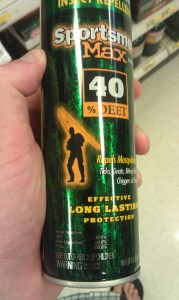 |
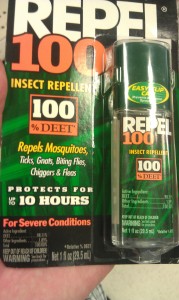 |
After looking a bit closer at the labels though, I noticed something peculiar in the “Active Ingredient” list…
Although the 23% and 40% concentrations included the proper percentages of DEET in their formulations, the 100% DEET repellent had only 98.11% DEET. Here are crops from the above photos:
| 23% DEET Crop | 40% DEET Crop |
100% DEET Crop |
 |
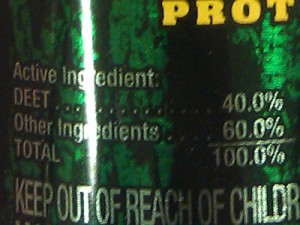 |
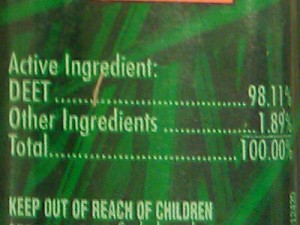 |
All of the other variants include the labeled percentages of DEET, but Repel decided that the 100% variant would not. Instead, it contains 100% DEET* (where the asterisk notes that the percentage is now the “Relative % DEET”). Hmm… so what exactly does “Relative % DEET” mean? I could not find any information on the packaging (old or new) nor could I find information on the internet, so who knows?
I called Repel (1-888-880-1181), which is a subsidiary of United Industries Corporation, to find out why there were incongruities with the labeling. The young woman I spoke with told me that although the 23% and 40% formulations include the percentage stated on the label, the 100% formulation (that only has 98.11% DEET) was marketed as such due to industry nomenclature. She could not tell me what “Relative % DEET” meant.
It appears as though Repel has realized “Relative % DEET” could not be easily quantified or marketed without the asterisk, so they have removed the percentage sign from newer packaging, labeling the product as simply “Repel 100”. However, many online stores are still marketing the Repel as containing 100% DEET:
| Walmart.com: Repel 100 Percent Deet Pump, 4 oz | Amazon.com: Repel 100 1 oz Insect Repellent Pump Spray 100% DEET 402000 |
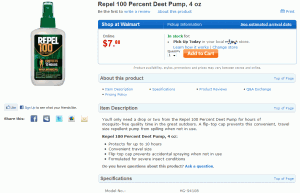 |
 |
Although this is a minor example, some companies allow their marketing departments a bit too much freedom, so it is important to be a savvy consumer (e.g., see: Lawsuit: Taco Bell Ground Beef Is Really Just “Meat Filling”). So, when looking at varying concentrations, caveat emptor.